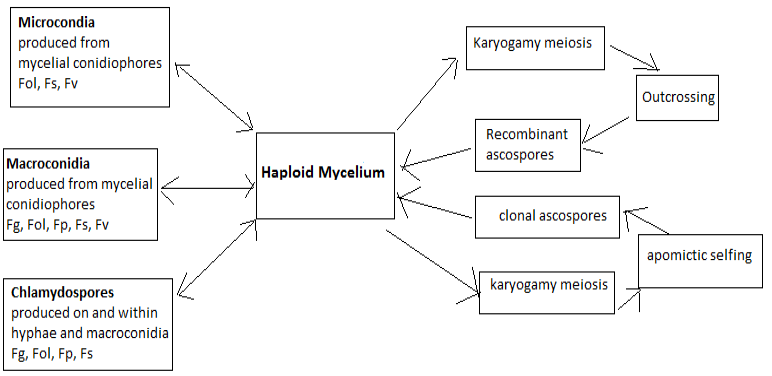Fusarium spp. Mycotoxin Production, Diseases and their Management: An Overview
Fusarium spp. Mycotoxin Production, Diseases and their Management: An Overview
Saba Shabeer1, Riffat Tahira2 and Atif Jamal3*
The General life cycle of Fusarium spp. plasmogamy and karyogamy results in the production of recombinant and clonal meiotic (sexual) spores in the outcrossed and selfed perithecium which in turn forms haploid mycelium. This haploid mycelium can produce three different types of spores that are mitotic in nature viz: micro and macro conidia which can colonize the host and chlamydospores which overwinters and whenever the conditions are favorable, they develop into perithecium and again starts the cycle. Abbreviations: Fg, Fol, Fusarium oxysporum f. sp. lycopersici; Fp, Fusarium pseudograminearum; Fs, Fusarium solani f. sp. pisi; Fv, Fusarium verticillioides(redrawn from Dweba et al., 2017; Ma et al., 2013).







